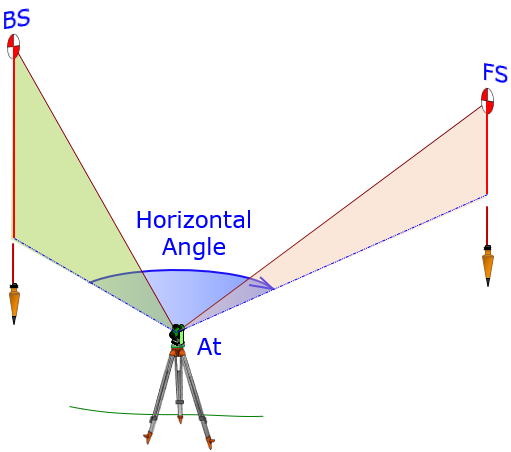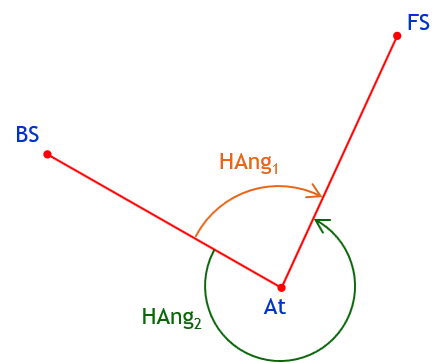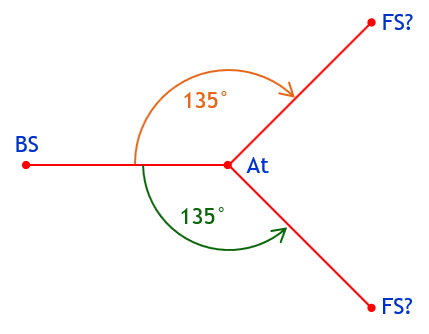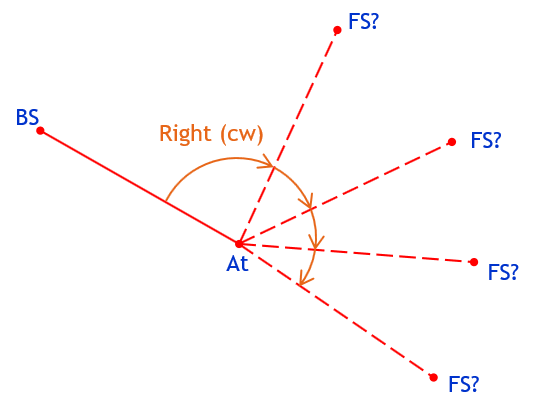{KomentoDisable}
G. Horizontal Angles
1. Definition
A horizontal angle is measured perpendicular to gravity. Three points are involved:
-
Backsight (BS)
-
Foresight; FS
-
At
The angle is between two vertical planes; one contains the BS and At points, the other contains the FS and At. The At point is generally occupied by a surveying instrument, Figure G-1.
|
|
|
Figure G-1 |
If we look down on the horizontal plane with the three points, Figure G-2, we see there are two horizontal angles between the vertical planes: HAng1 and HAng2.
|
|
|
Figure G-2 |
This causes an ambiguous situation unless we can specifically identify which angle we mean. Recall that the four parts of an angle are:
-
Start
-
Direction
-
Magnitude
-
End
HAng1 and HAng2 have the same start (BS) and end (FS) but different direction and magnitude. All four parts must be clearly defined. Merely including magnitude without a direction doesn’t resolve the ambiguity. For example, a 135° angle from BS to FS could still be interpreted two ways, Figure G-3.
|
|
|
Figure G-3 |
Similarly, expressing a direction, to the right (clockwise) or left (counterclockwise), without a magnitude is also unclear, Figure G-4.
|
|
|
Figure G-4 |
There are a few different ways to specify horizontal angles which help minimize confusing interpretations.



